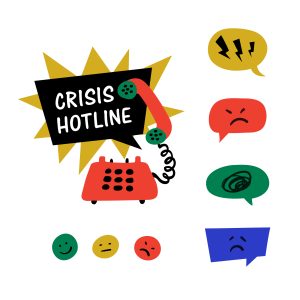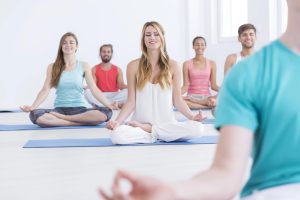In the intricate landscape of healthcare provision, revenue cycle management (RCM) represents a critical framework, ensuring that healthcare providers maintain financial viability while delivering high-quality care. Understanding what is revenue cycle management and its dynamics is fundamental for case management professionals, as it encompasses every step from patient entry to revenue realization. This integral process not only impacts the bottom line but also influences the quality of patient care, aligning with the principles of value-based care. Its importance cannot be overstated, as effective RCM practices ensure that healthcare providers can navigate the complexities of medical billing, adapt to changes in healthcare regulations, and meet the expectations of patients and payers alike.
This article will explore the multifaceted aspects of revenue cycle management in medical billing and case management, beginning with the definition of revenue cycle management and its key components. Subsequent sections will delve into the crucial stages of the revenue cycle, including pre-registration, charge capture, claim submission, and payment reconciliation. Special emphasis will be placed on strategies for efficient insurance follow-up, denial management techniques, and the adoption of patient-friendly billing practices. Moreover, the potential of leveraging technology to optimize revenue cycle management healthcare will be discussed, alongside developing a comprehensive RCM strategy to foster financial health and ensure the delivery of quality care. Through this exploration, healthcare providers will gain insights into how to enhance their revenue cycle management practices, ultimately supporting their transition towards sustainable, patient-centered services.
Please also review AIHCP’s Healthcare Case Management Certification and see if it matches your academic and professional goals.
Defining Revenue Cycle Management in Case Management

Revenue Cycle Management (RCM) serves as the financial backbone for healthcare facilities, meticulously navigating the entire patient care journey from initial registration to final balance payment. This critical system not only manages the administrative tasks but also intertwines with clinical operations, ensuring all financial transactions are precisely handled throughout a patient’s healthcare experience.
Overview of RCM
RCM is an intricate process that integrates both the business and clinical aspects of healthcare. It links administrative data, such as patient details and insurance information, with the treatment and healthcare data received by the patient. The Healthcare Financial Management Association (HFMA) outlines that this comprehensive cycle includes all administrative and clinical functions essential for capturing, managing, and collecting patient service revenue. Key components of RCM encompass charge capture, claim submission, coding, patient collections, preregistration, registration, remittance processing, third-party follow-up, and utilization review. Each component ensures a streamlined and efficient financial process in healthcare operations.
Role of Case Management
Case management plays a pivotal role in enhancing the efficiency of RCM. Case managers bridge the gap between financial and clinical services, ensuring that healthcare facilities maximize their reimbursements while advocating for patient care. Their responsibilities extend from utilization management to discharge planning and care coordination, all of which directly impact the revenue cycle. By ensuring that services meet medical necessity criteria and are classified correctly, case managers help prevent denials and streamline the billing process from admission through discharge.
Case managers also engage in continuous communication with all stakeholders involved in the revenue cycle, including physicians, clinical care teams, and insurance payers. This collaborative approach minimizes the days a case spends in accounts receivable, reduces the risk of denials, and ensures compliance with healthcare regulations. In value-based care models, the quality of outcomes directly influences financial performance, making the role of case managers crucial in achieving both clinical and financial objectives.
Through effective case management, healthcare organizations can not only optimize their revenue cycle but also improve patient outcomes, demonstrating the integral role of RCM in sustaining healthcare operations.
Pre-Registration and Patient Information Gathering
Pre-registration and patient information gathering are essential initial steps in the revenue cycle management (RCM) process, ensuring that all necessary data is collected before a patient’s visit. This process not only streamlines subsequent billing and coding procedures but also enhances patient satisfaction by reducing administrative delays.
Key Steps in Pre-Registration
The pre-registration process involves several key steps to ensure that all patient information is accurate and complete. Initially, healthcare providers collect critical patient data such as name, date of birth, address, social security number, insurance provider, and plan details. This information is crucial for establishing a patient account and verifying insurance eligibility.
It is imperative that the information gathered is accurate to prevent issues such as claim denials due to ineligible insurance or incorrect patient details. Healthcare providers must also verify the insurance coverage to understand what services are covered under a patient’s plan and to provide an accurate estimate of the costs for which the patient will be responsible.
The use of pre-registration software can facilitate this process by allowing patients to submit their information online prior to their appointment. This not only saves time during the patient’s visit but also enables the healthcare provider to prepare any necessary documents and verify insurance coverage in advance.
Importance of Accurate Data
Accurate data is the cornerstone of effective RCM. According to IBM, data quality is assessed on several dimensions including validity, accuracy, completeness, consistency, timeliness, fitness for purpose, and uniqueness. In the context of RCM, these dimensions ensure that the data collected during the pre-registration process meets the high standards required for efficient revenue cycle management.
For instance, validity ensures that data is entered in the correct format, while accuracy and completeness guarantee that the information is correct and comprehensive. Consistency across data sources minimizes discrepancies that could lead to claim rejections or denials. Timeliness ensures that data is available when needed, particularly for urgent healthcare services.
Poor data quality can lead to significant issues such as increased wait times, payer rejections, and ultimately, a negative impact on revenue integrity and patient experience. Implementing robust data governance policies is crucial for maintaining high standards of data quality. These policies should outline how data is collected, maintained, secured, and accessed within the organization.
Moreover, leveraging technology to validate and standardize data can significantly enhance the efficiency of the RCM process. Automated tools can detect discrepancies, validate information, and reduce the time and resources required for data management.
By prioritizing accurate data collection during pre-registration, healthcare providers can reduce administrative burdens, enhance patient satisfaction, and maintain financial health.
Charge Capture and Effective Medical Coding
Charge capture and medical coding are pivotal elements in the healthcare revenue cycle management, serving distinct yet interconnected functions. Charge capture involves the accurate recording and submission of patient charges for services and procedures to insurance providers for reimbursement. This process is crucial for preventing revenue leakage, which often results from improperly captured or incorrectly billed charges.
Ensuring Complete Charge Capture
The complexity of charge capture is highlighted by the potential for errors in a hospital’s chargemaster, which can contain over 40,000 line items. These errors may lead to substantial financial losses due to unclaimed revenue, rework, fines, and penalties. Utilizing charge capture software can mitigate these risks by providing easier access to Current Procedural Terminology (CPT) codes, alerting teams to missing charges, and setting up work queues to flag patterns of missing charges. Moreover, the adoption of mobile charge capture technologies, such as smartphones and tablets, enhances billing accuracy, reduces charge lag, and integrates seamlessly with Electronic Health Records (EHR) and Practice Management Systems (PMS).
Importance of Accurate Coding
Medical coding translates complex medical diagnoses, procedures, and services into universally understood codes, which are essential for precise billing submissions to insurance companies. This accuracy is critical not only for ensuring appropriate reimbursement but also for maintaining compliance and avoiding legal issues. Inaccuracies in coding, such as erroneous ICD-10 code diagnoses, can lead to compliance risks, delayed reimbursements, and reduced quality of care, which in turn affect the financial and operational health of healthcare providers.
Accurate medical coding also plays a crucial role in healthcare analytics and public health management. By converting detailed patient data into standardized codes, medical coding allows for efficient data analysis, which helps in identifying health trends, evaluating medical interventions, and improving healthcare policies. Furthermore, proper coding practices ensure that healthcare providers are reimbursed correctly, reducing the risk of claim denials and enhancing overall financial stability.
Implementing advanced technologies like automated machine learning-based coding scrubbers, computer-assisted coding (CAC), and natural language processing (NLP) software can streamline the coding process, reduce errors, and improve the overall efficiency of revenue cycle management. Regular training and education for coding professionals are essential to stay updated with the latest coding rules and regulations, ensuring that coding accuracy is maintained across healthcare systems.
By effectively linking clinical documentation with accurate codes, healthcare providers can safeguard their financial interests, uphold the integrity of patient care, and enhance operational efficiencies. This integrated approach to charge capture and medical coding not only supports financial health but also contributes to the delivery of high-quality patient care.
Submitting Claims Efficiently

In the realm of healthcare revenue cycle management, the claim submission stage is where healthcare providers formally request payment from insurance companies for services rendered. This stage is crucial as it directly impacts the revenue flow and the turnaround time for payments.
Timely and Accurate Submission
The process of submitting claims efficiently involves compiling all necessary information, including details of services rendered and their corresponding codes, and submitting this to the payer. Timeliness in this process is paramount; delays in claim submission can lead to delayed payments, adversely affecting cash flow. Similarly, accuracy is critical to prevent denials or rejections. Each insurance payer may have specific requirements for claim submission, including the format and types of supporting documentation required. Adhering to these requirements is essential to minimize denials and the need for rework.
To enhance accuracy and timeliness, healthcare providers should establish a peer review system where claims are cross-checked by another team member before submission. This collaborative approach helps catch errors that might have been overlooked by the initial preparer and serves as a valuable learning tool, allowing staff members to share knowledge and best practices in claim preparation. It fosters an environment of continuous improvement and collective responsibility for the accuracy of claims.
Ensuring Payer Compliance
Effective claim submission involves not only accurate coding and thorough documentation but also strict adherence to payer-specific guidelines. Streamlining this step is essential to ensure timely reimbursement and maintain the financial stability of healthcare organizations. Best practices include scrubbing claims for errors before submission to reduce denials and utilizing electronic claims submission for faster processing. Following each payer’s submission guidelines meticulously and ensuring that medical records support billed services are also critical.
To track the status of each claim and ensure it’s being processed, and to address any issues promptly, implementing a system for tracking and resubmitting denied claims is advisable. Regular checks and audits can help identify and rectify issues early in the process, such as inaccuracies in patient information or coding errors, which are frequent causes of claim denials.
By prioritizing these practices, healthcare providers can reduce administrative burdens, enhance patient satisfaction, and maintain financial health.
Handling Payment Posting and Reconciliation
Payment posting and reconciliation are critical components of revenue cycle management (RCM) that directly influence the financial health of healthcare practices. They ensure that all payments are accurately recorded and reconciled, providing a clear financial status of the organization.
Steps for Accurate Posting
- Recording Payments: Each payment, whether from patients or insurance companies, must be meticulously recorded. This includes cash, checks, and credit card payments for co-pays, deductibles, or non-covered services.
- Processing Insurance Payments: Payments received through Electronic Remittance Advice (ERA) must be processed in batches. Each transaction is imported into the practice management system for detailed review to identify any exceptions that require attention.
- Manual Posting: Scanned batches of Explanation of Benefits (EOBs) are accessed via secure systems and posted to patient accounts, ensuring that each entry matches the documented services.
- Denial Posting: When claims are denied, it is crucial to record each denial in the system. Subsequent actions may include re-billing to secondary insurance, transferring balances to patients, or writing off amounts.
Resolving Payment Issues
- Identifying Discrepancies: Discrepancies in payments can arise from coding errors, billing mistakes, or contract negotiation issues. It is essential to identify these discrepancies promptly and take corrective action.
- Reconciliation of Payments: Comparing payments received with billed charges is crucial. This involves ensuring that the amounts in ERAs align with bank deposits to confirm that all funds are accounted for.
- Appeals and Corrections: If discrepancies are identified, an appeal may be necessary. This could involve submitting additional documentation or clarification to support the original claim.
- Utilizing Technology: Implementing advanced software solutions can help improve accuracy and efficiency. Tools that suggest codes based on provider notes or that automate data entry can significantly reduce errors.
By adhering to these structured steps and addressing any issues promptly, healthcare providers can enhance their RCM processes, leading to improved operational efficiency and financial performance. This systematic approach not only helps in maintaining accurate financial records but also supports the overall goal of delivering high-quality patient care.
Insurance Follow-Up and Denial Management Techniques
Insurance Follow-Up and Denial Management Techniques are crucial for maintaining the financial health of healthcare organizations. With rising denial rates and increasing financial pressures, effective management of insurance follow-ups and denials is vital.
Proactive Follow-Up
Proactive follow-up on insurance claims is essential to ensure timely reimbursement and to maintain a healthy cash flow. Establishing clear policies and procedures for follow-up is crucial. These should include setting specific timelines for follow-up actions and designating responsible parties to handle the process. Automation plays a significant role in streamlining this process; using revenue cycle software can automate appeals, track claims, and generate reports, thus improving the Insurance Follow-Up Rate.
Regular monitoring and analysis of insurance follow-up metrics can identify gaps in the billing process, ensuring that all claims are pursued efficiently. Training staff on best practices for effective communication with payers and understanding payer policies can also enhance the follow-up process. Implementing a denial management program can further improve follow-up rates by reducing the number of denied claims and ensuring timely appeals.
Resubmission and Appeal Strategies
When claims are denied, a structured approach to resubmission and appeals is necessary. Understanding the common reasons for denials, such as inadequate documentation or coding errors, can help in preparing a more effective appeal. Each denied claim should be analyzed to understand the cause and to determine the appropriate corrective actions.
Resubmission should involve a thorough review of the claim, ensuring that all documentation supports the billed services and that coding is accurate. If necessary, additional evidence such as medical records, articles, or letters from providers should be included to support the appeal. This not only increases the chances of overturning the denial but also reduces the likelihood of future denials.
Continuously evaluating internal workflows to identify areas for improvement is crucial. Ongoing staff training ensures that everyone is up-to-date with the latest practices and technologies in claims management. Running reports to identify patterns in denials can help in taking preventive actions within the required time frame set by payers, which can be as short as 90 days.
By adopting these proactive follow-up and resubmission strategies, healthcare providers can significantly reduce the impact of claim denials on their revenue cycle, leading to improved financial performance and enhanced patient satisfaction.
Patient-Friendly Billing Practices
Clear Communication with Patients

Effective patient communications are pivotal in managing the financial aspect of healthcare. Providers must ensure that patients clearly understand their financial responsibilities and the details of their healthcare costs. This transparency begins with simplifying the information provided, especially concerning medical billing and insurance terminology. Utilizing visual aids such as charts or infographics can significantly aid in this process, making complex billing structures more understandable.
It is crucial for healthcare providers to discuss all potential costs upfront. This approach not only builds trust but also prevents the stress associated with unexpected expenses. Regular updates and clear explanations about changes in billing, copayments, and insurance coverages should be communicated through preferred patient channels like text messages or emails, which offer convenience and immediacy.
Flexible Payment Options
To address the diverse financial needs of patients, healthcare providers should offer flexible payment solutions. These can range from third-party financing, where the provider partners with external financial services, to in-house installment plans that allow patients to pay over time. Such flexibility can significantly reduce the financial burden on patients, making it easier for them to manage their healthcare expenses without stress.
- Third-party Financing: This option involves external agencies that handle the financial transactions, providing patients with predictable payment plans. Such plans often come with benefits like lower interest rates and minimal credit requirements, making healthcare more accessible.
- Installment Plans: Managed by the healthcare provider, these plans allow patients to spread the cost of their care over time, ensuring they can manage payments without compromising on necessary services.
- Recurring Payment Plans: For long-term treatments, recurring payment plans can be set up, allowing patients to make regular payments without a definitive end date. This method offers consistency and predictability, which can ease the financial planning for ongoing healthcare needs.
In addition to these structured plans, incorporating modern payment technologies can enhance the patient experience. Features like card-on-file and 24/7 digital payment options ensure convenience, reducing the barriers to timely payments. Security measures must be robust, adhering to standards such as HIPAA, to protect patient information and build trust in the digital transaction systems.
By implementing these patient-friendly billing practices, healthcare providers can improve patient satisfaction, ensure timely payments, and maintain a stable financial environment, all while supporting patients in managing their healthcare expenses effectively.
Leveraging Technology to Enhance RCM
Using EHR and RCM Software
Electronic Health Records (EHR) and Revenue Cycle Management (RCM) systems are pivotal in enhancing the efficiency and accuracy of healthcare operations. The integration of EHR with RCM facilitates a seamless flow of patient data to billing systems, which significantly reduces the administrative burden and minimizes errors in claim submissions. For instance, when demographic and clinical information from EHRs automatically populates RCM platforms, it ensures that claims are accurate and compliant with payer requirements. This automation not only streamlines the billing process but also accelerates the reimbursement cycle, leading to improved cash flow.
Moreover, EHR systems contribute directly to patient care by providing healthcare professionals with easier access to patient information, which enhances communication and prevents critical information from being overlooked. This integration also supports more personalized patient interactions and ensures that billing processes are more accurate, which can reduce instances of patient dissatisfaction due to billing errors.
Predictive Analytics and AI
Predictive analytics and artificial intelligence (AI) are transforming RCM by providing advanced insights into payment behaviors and potential denials. These technologies utilize historical data and machine learning algorithms to forecast future trends, enabling healthcare providers to make proactive adjustments to their billing and coding processes. For example, predictive analytics can identify patterns in payment delays or common reasons for claim denials, allowing healthcare organizations to address these issues before they impact financial performance.
AI-driven tools in RCM can automate routine tasks such as eligibility verification, claim status checks, and payment posting. This automation reduces the need for manual intervention, thereby decreasing the likelihood of errors and enhancing operational efficiency. Additionally, predictive models enable healthcare providers to segment patients based on their payment behaviors, which helps in tailoring communication strategies and payment plans to individual needs, thereby improving patient satisfaction and financial outcomes.
Implementing these technological advancements not only optimizes the financial processes but also aligns with the goals of value-based care by improving the overall patient experience and care quality. As healthcare continues to evolve, leveraging technology in RCM will be crucial for sustaining financial health and delivering superior patient care.
Developing a Comprehensive RCM Strategy
Developing a comprehensive strategy for Revenue Cycle Management (RCM) requires a multi-faceted approach that addresses both technological advancements and human resource management. This strategy should focus on enhancing efficiency, reducing errors, and fostering a culture of continuous improvement.
Cross-Department Collaboration
A key component of a successful RCM strategy is fostering cross-department collaboration. Strategic alignment and leadership commitment are essential, as they ensure that all departments understand the organization’s goals and the critical role RCM plays in achieving them. By establishing a dedicated RCM team that includes representatives from all relevant departments, organizations can enhance communication, streamline processes, and identify bottlenecks more effectively.
This team should focus on developing solutions and implementing best practices across the revenue cycle, which will lead to increased revenue and improved operational efficiency. Regular meetings and shared platforms can facilitate ongoing communication and ensure that all team members are aligned with the organization’s objectives.
Continuous Improvement and Training
Creating a culture of continuous improvement is vital for maintaining an effective RCM system. This involves regular assessment of the RCM processes to identify areas for improvement and adapt to changing regulations and market conditions. Implementing structured approaches like Lean Six Sigma can help in systematically identifying inefficiencies and developing solutions.
Ongoing training and development for staff involved in the RCM process are crucial. This includes not only technical training on RCM software and tools but also education on the importance of collaboration and effective communication. Continuous training ensures that staff remain competent and confident in their roles, which enhances their engagement and effectiveness.
Encouraging feedback from staff across all departments involved in the RCM process can provide valuable insights into potential improvements. This feedback fosters a sense of ownership and accountability, which is essential for a proactive RCM environment.
By integrating these elements into the RCM strategy, healthcare organizations can ensure a robust system that not only supports financial goals but also contributes to overall patient satisfaction and care quality.
Conclusion
Throughout the exploration of effective strategies for Revenue Cycle Management (RCM) in healthcare, a distinct emphasis was placed on the importance of integrating technological advancements and fostering efficient case management practices to optimize financial health and patient care. From the initial patient registration to the final step of payment reconciliation, each stage of the RCM process has been meticulously examined to highlight strategic improvements and the adoption of patient-centered approaches. The role of technology, particularly the use of Electronic Health Records (EHR) and advanced data analytics, emerged as a pivotal factor in enhancing operational efficiency and streamlining the billing and payment processes, reinforcing the connection between quality care delivery and robust financial management.

As healthcare organizations navigate the complexities of modern healthcare delivery, the significance of developing a comprehensive RCM strategy that promotes collaboration across departments and continuous improvement cannot be overstated. Such strategies not only ensure the financial viability of healthcare providers but also significantly contribute to the delivery of high-quality, patient-focused care. By adopting a holistic approach to RCM, healthcare organizations can achieve a delicate balance between maintaining operational efficiency and meeting the evolving needs of their patients, ultimately setting a foundation for sustainable healthcare delivery in the face of ever-changing industry dynamics.
Case Managers play a key role in the revenue cycle. AIHCP offers healthcare professionals an opportunity to earn a four year certification in Healthcare Case Management. The program addresses revenue management as well as numerous other elements critical to successful Healthcare Case Management. The program is online and independent study and open to qualified professionals seeking a four year certification as a Case Mananger.
FAQs
1. What methods can enhance the efficiency of the revenue cycle?
To boost the efficiency of your revenue cycle, consider these eight strategies:
- Enhance appointment scheduling processes.
- Implement automation for patient eligibility verification.
- Ensure upfront verification of payment processes.
- Modernize the claims processing approach.
- Consider outsourcing medical billing tasks.
- Effectively manage claim denials.
- Diligently track and follow up on claims.
2. What are the critical metrics for improving the revenue cycle?
Improving your revenue cycle can be guided by focusing on five essential metrics:
- Days in Accounts Receivable.
- Percentage of Accounts Receivable over 90 days.
- Clean claim rate.
- Denial rate.
- Net collection rate.
3. How does case management contribute to revenue cycle management?
Case management primarily addresses the middle segment of the revenue cycle, providing vital support. An effective case management team plays a crucial role in addressing complex patient care needs, enhancing patient outcomes, and minimizing claim denials within the organization.
4. What are the best metrics to assess the performance of revenue cycle management?
To effectively evaluate your revenue cycle management, regularly measure these five key performance indicators:
- First pass resolution rate.
- Net collection rate.
- Denial rate.
- Days in accounts receivable.
- Cost to collect
Additional Resources
“What Is Revenue Cycle Management (RCM)?” AAPC. Access here
“Healthcare Revenue Cycle Management (RCM): A Blueprint for Success” (2023). GHR Healthcare. Access here
Alradhi, Z. and Alanazi, A. (2023). “The Road Ahead and Challenges of Revenue Cycle Management in Saudi Governmental Hospitals”. Healthcare (Basel). 2023 Oct; 11(20): 2716.. National Library of Medicine. Access here
Craig. M. (2024). “A Comprehensive Guide to Revenue Cycle Management in Healthcare”. Revenue Cycle Associates. Access here





 A critical aspect of the forensic nurse’s role is the collection and preservation of evidence. This process is meticulous and governed by strict protocols to ensure that the evidence can be used in legal proceedings. Forensic nurses are trained in the proper techniques for documenting injuries, collecting biological samples, and maintaining the chain of custody for all collected evidence. Their detailed attention to the process ensures that the evidence gathered can withstand rigorous scrutiny in court.
A critical aspect of the forensic nurse’s role is the collection and preservation of evidence. This process is meticulous and governed by strict protocols to ensure that the evidence can be used in legal proceedings. Forensic nurses are trained in the proper techniques for documenting injuries, collecting biological samples, and maintaining the chain of custody for all collected evidence. Their detailed attention to the process ensures that the evidence gathered can withstand rigorous scrutiny in court.







 Written by Harriet Turner.
Written by Harriet Turner.














